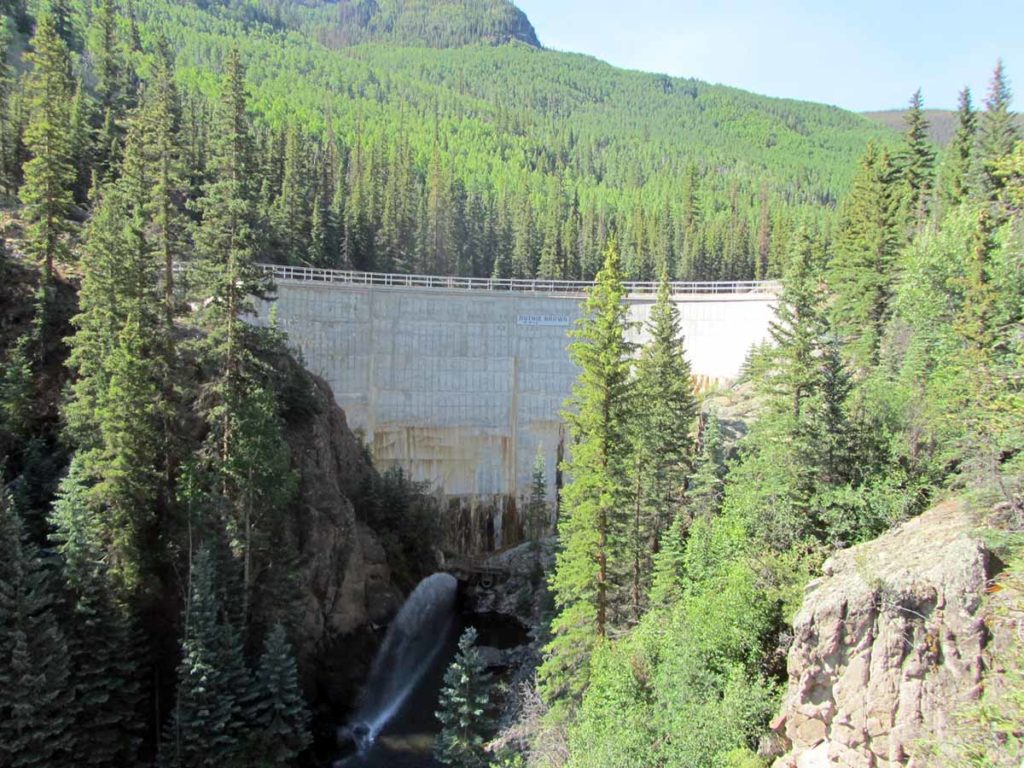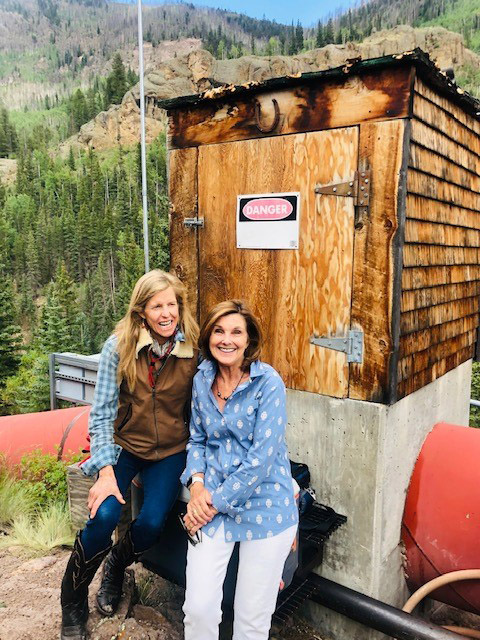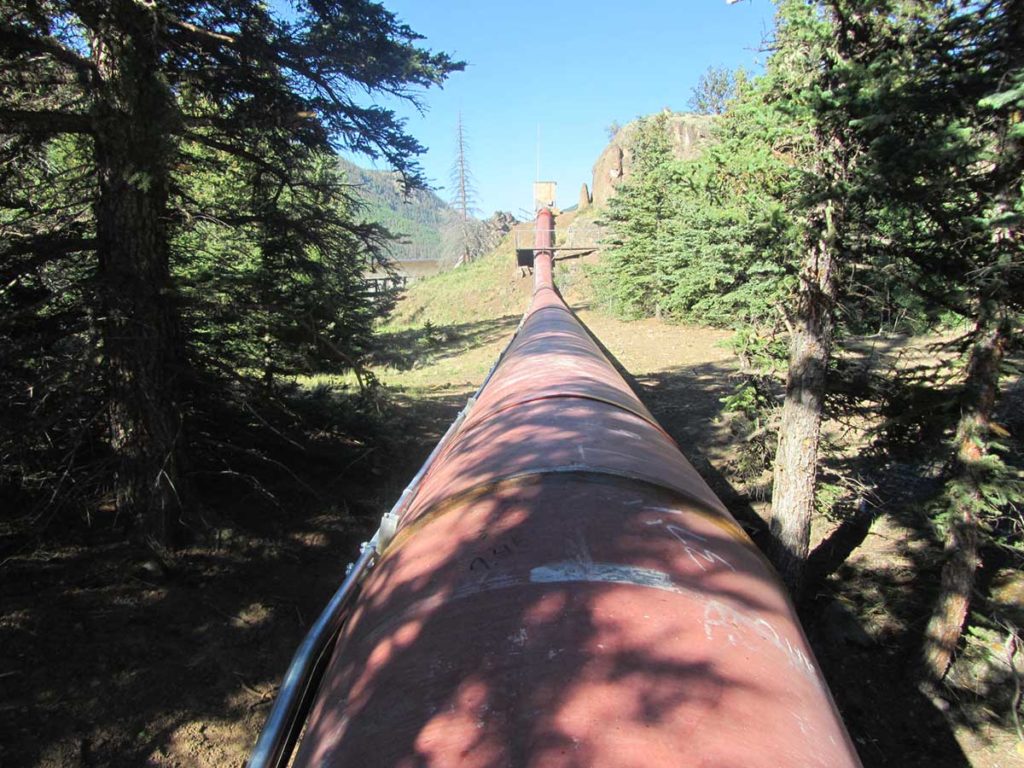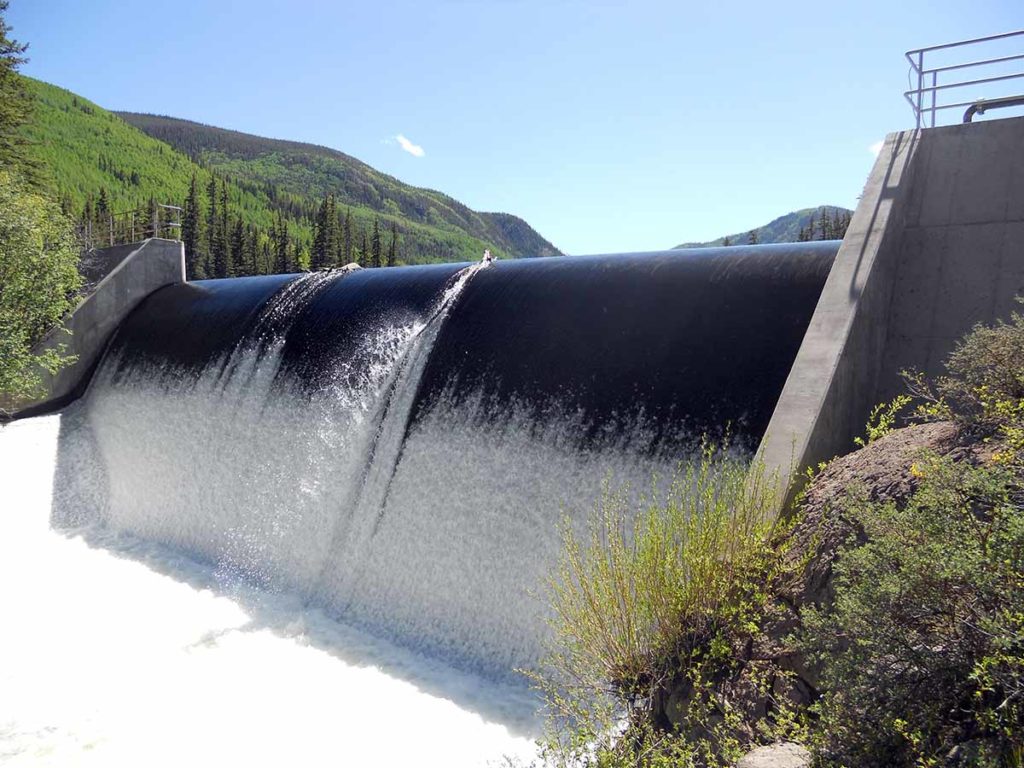
Solar power makes up most of San Luis Valley REC’s renewables portfolio, but the showstopper of its renewable generation mix is a 100-year-old dam with a 90-foot concrete arch in the Colorado wilderness that for the past decade has helped power a remote town through a modern generator.
“It’s probably one of our more unique renewable sources, and it would be hard to imagine that there are more private hydroelectric facilities this size. Think of it as a miniature Hoover Dam,” said Loren Howard, CEO of the Monte Vista-based co-op.

The Humphreys Dam, the co-op’s only hydro source, celebrated its 10th anniversary recently in Creede, the town that it helps power. Fed by Goose Creek, the dam’s output accounts for about 1% of the co-op’s renewables portfolio, said Howard.
For dam operator Ruthie Brown, 65, the milestone also marked her first decade as an independent power producer. She is credited for her tireless efforts to modernize the dam, built by her great-grandfather in the 1920s, into a cost-effective facility with a single-phase generator capable of producing up to 340 kilowatts of hydropower.
“I gave the project a face,” said Brown. “I never hesitated to get to the person who would help me and ask, ‘I don’t understand this. Why do we have to do this? What is this about?’”
San Luis Valley REC just renewed a 10-year power purchase agreement with Wagon Wheel Associates, a company Brown’s family founded to operate the dam.

Brown hit upon the idea to transform the facility in 2008 into a money-making business to pay for the family ranch’s considerable upkeep and create more clean energy.
She navigated bureaucracies, forged alliances with engineers and federal regulators and ultimately won $900,000 in U.S. Department of Agriculture funds to install the project’s unique cross-flow turbine with a single-phase generator and other equipment.
“The experts all came on board,” said Brown. “They really took pride in this woman who really had no idea what she was doing but still took on the Federal Energy Regulatory Commission.”

At one point, Brown even rolled up her sleeves and joined the crews.
“Ruthie was great to work with and very hands on, stripping concrete forms and out there helping where she could. It’s one of my favorite projects,” said Gary Boring, the retired owner of a construction company that coordinated installation of the facility’s penstock and generator in 2010 and 2011.
Brown transformed herself into an authority on single-phase power systems. Recently, she advised a company in Greenland on a similar setup.
“I’m not a banker. I’m not an attorney. I’m not an engineer,” said Brown. “I’m a citizen who wanted to do what was right for the world we live in now, and bringing more renewables online is definitely the right thing to do.”
Victoria A. Rocha is a staff writer for NRECA.